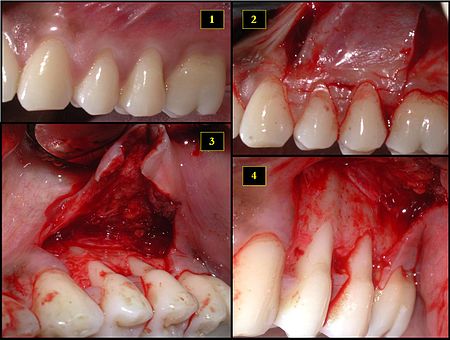Terminology and History
- SECT graft is a free autogenous graft.
- 'Free' describes the complete removal of the graft from the donor site.
- 'Autogenous' means the donor tissue is provided by the same individual who receives the graft.
- Connective tissue is usually taken from the hard palate.
- Subepithelial refers to the transplantation of connective tissue without the superficial epithelium.
- Edel initially described the SECT graft for increasing the zone of keratinised tissue.
- Other researchers like Broome, Taggert, and Donn also used SECT grafts for the same purpose.
- Edel described different methods for preparing the donor site, such as palatal partial thickness flap and tuberosity partial thickness flap.
- Langer later proposed the use of SECT grafts for root coverage following gingival recession.
- Currently, hard tissue replacements like bone graft materials are commonly used for augmenting hard tissue defects.
Advantages
- The SECT graft combines the benefits of pedicle flaps and free gingival grafts.
- Pedicle flaps alone often suffer from retraction and muscle pull.
Technique
- The procedure involves incising the gingivae at the recipient site.
- The SECT is obtained from the donor site.
- The SECT is secured at the recipient site.
- The incised gingival tissue at both the donor and recipient sites is sutured.
- The donor site may be sutured closed before or after securing the donor tissue to the recipient site.
References
- Edel's study evaluated the clinical use of free connective tissue grafts to increase the width of keratinised gingiva.
- Wennstrom and Pini Prato's book 'Mucogingival Therapy - Periodontal Plastic Surgery' provides information on SECT grafts.
- Langer and Calagna's study introduced the subepithelial connective tissue graft technique.
- Broome and Taggert reported two cases of free autogenous connective tissue grafting.
- Donn conducted a clinical and histologic wound healing study on the free connective tissue autograft.
In dentistry, the subepithelial connective tissue graft (SECT graft, and sometimes referred to simply as a connective tissue (CT) graft) is an oral and maxillofacial surgical procedure first described by Alan Edel in 1974. Currently, it is generally used to obtain root coverage following gingival recession, which was a later development by Burt Langer in the early 1980s.
